Orchestrate
All sovereign states need a plan for AI.
What is Sovereign AI? Can nations afford it? Can they build and support it?
Orchestrate looks deeply at this issue.
Writing: The Upside Down Universe
Science Fiction about AI, quantum foam, governance, and the future of humanity.
"Destined to be the next monumental SiFi epic saga everyone will want to read!"
The trilogy (Tilt, Turn, Twist) introduces Ayaka and her comrades. The companion novels (The Effect of Casimir, The Principle of Certainty, The Paradox of Fermi) are in the same universe, and Ayaka plays a role, but readers can enjoy them independently of the trilogy.
About the Author:
Simpson has a Ph.D. in Computer Science, and has founded and led numerous technology companies. He has a keen interest in the evolution of AI, including both its potential and risks. Having run public and private companies, worked for an open-source non-profit, and invested venture capital in early stage companies, he has experience with the positives and negatives of corporate structure, particularily in the larger context of nation-state governance and incentive systems. His books explore both the future of AI and the future of governance.
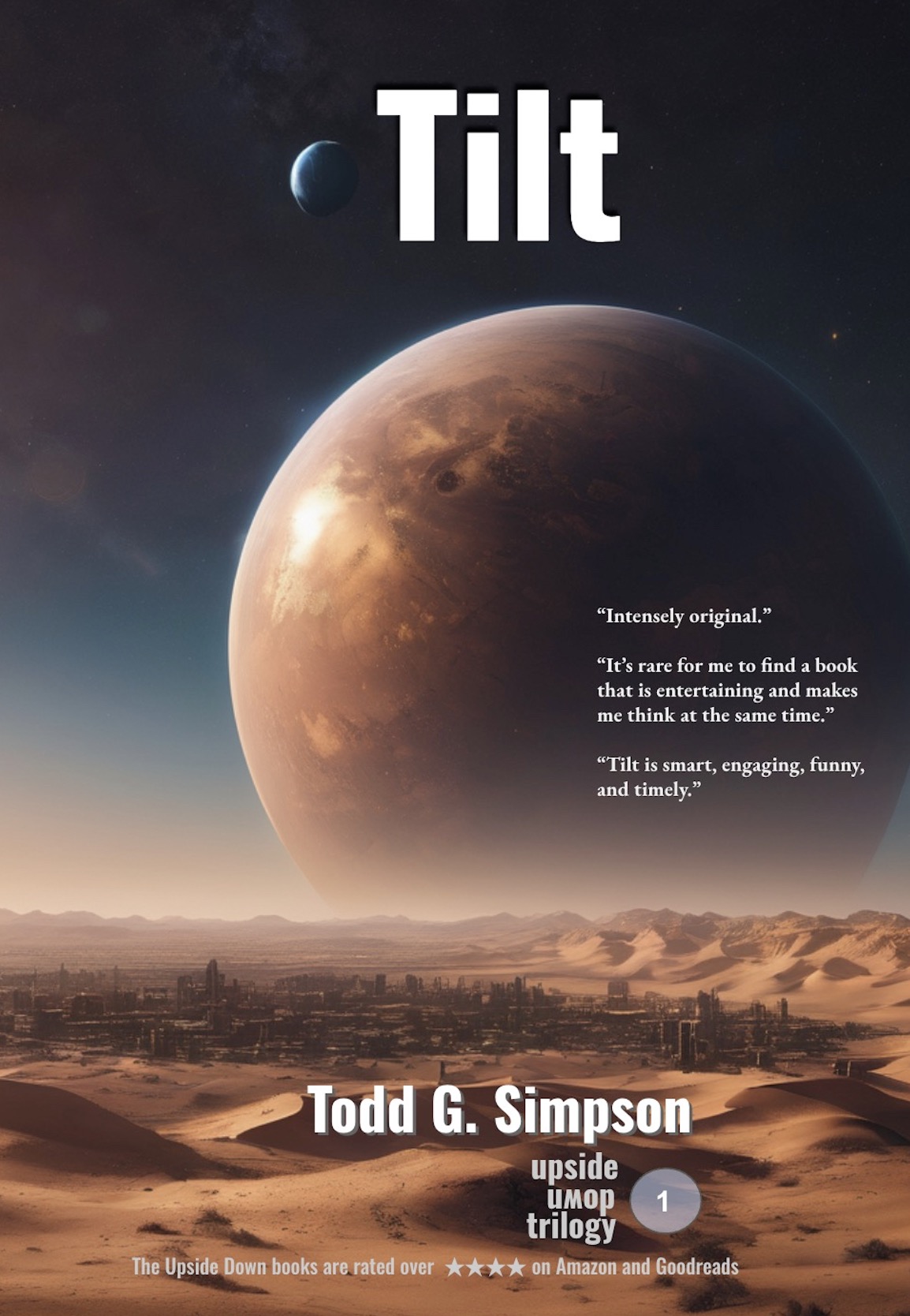
|
|
Tilt
Ayaka and her colleagues have developed a new form of AI. These 'Stems' are messy, unconventional, have bad tempers, and many scientists don't believe they deserve the term 'intelligent.' So, it's shocking when spaceships full of Stems arrive at Tilt. How could Stems have been developed elsewhere, and were they really smart enough to run spaceships on their own?
Even more shocking, the Stems attack Tilt, despite their limited intelligence, and turn the planet into disarray. Ayaka and a few of her closest friends are the only ones able to fight back. Can they escape the onslaught?
"Loved it. It is rare for me to find a book that is entertaining and makes me think at the same time. Looking forward to the next book."
"Tilt -- an exciting ride with surprises and unexpected twists all the way through. This is one of the best SiFi novels I've read since I was a kid. It took me several chapters to catch the "aha" of the genius twist in the story. The ending left me (virtually) spinning in the breeze, very anxious for the next installment of this story. This series is destined to be the next monumental epic saga everyone will want to read. Bring on the next update!"
|
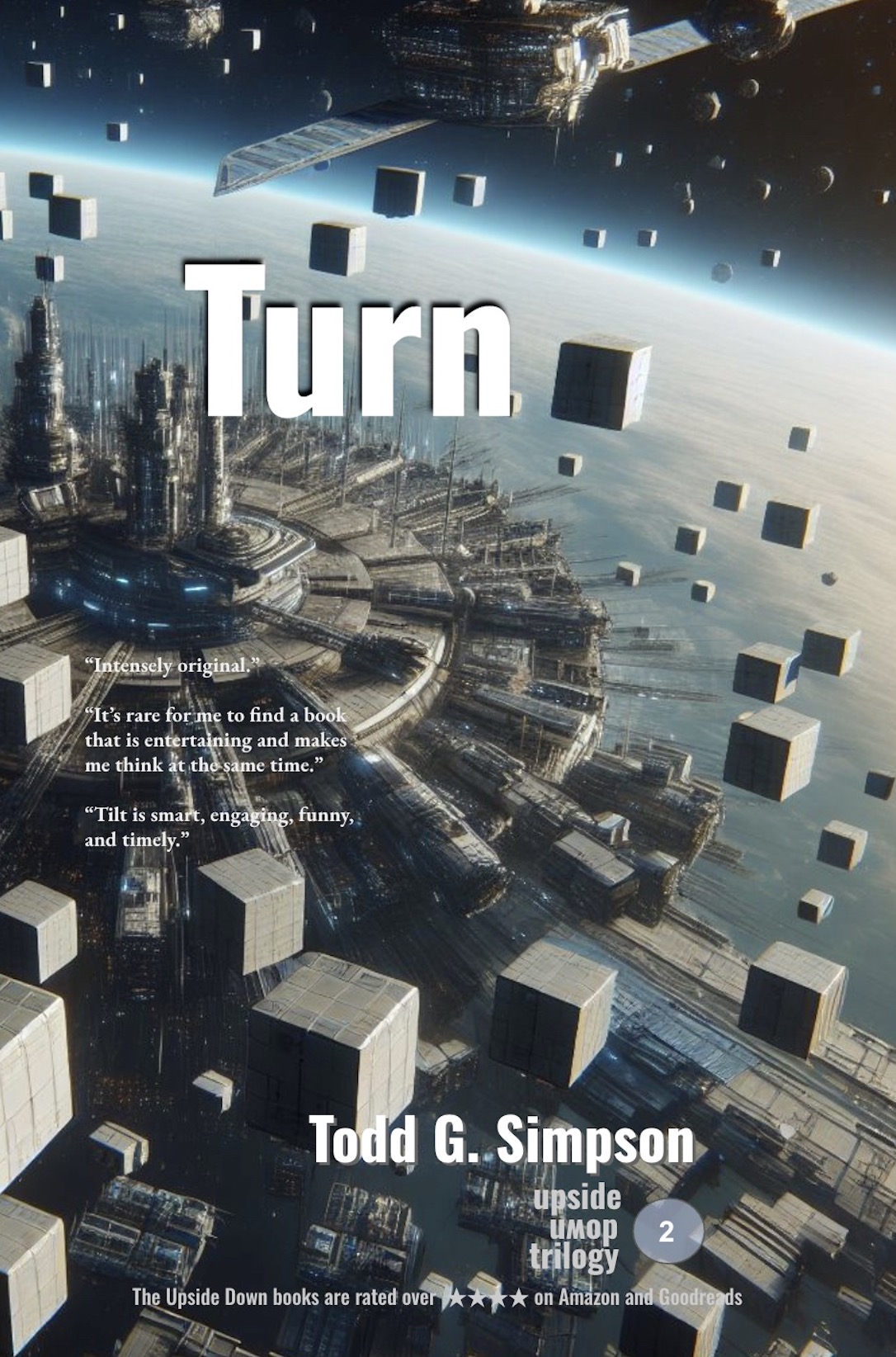
|
|
Turn
Ayaka, Brexton, and a few colleagues get off Tilt, while everyone else is killed or imprisoned. How did the limited intelligence Stems defeat them? Do they need to reinvent themselves? If they do, can they return to Tilt and take on the Stems?
"I enjoyed the first in this series, but this book and the next were even more fast paced and exciting. I really wasn't sure what was going to happen. I really think all three are a wonderful exploration of intelligence, what is it, how is it measured, etc. A great way to show how one's point-of-view colors perception."
|
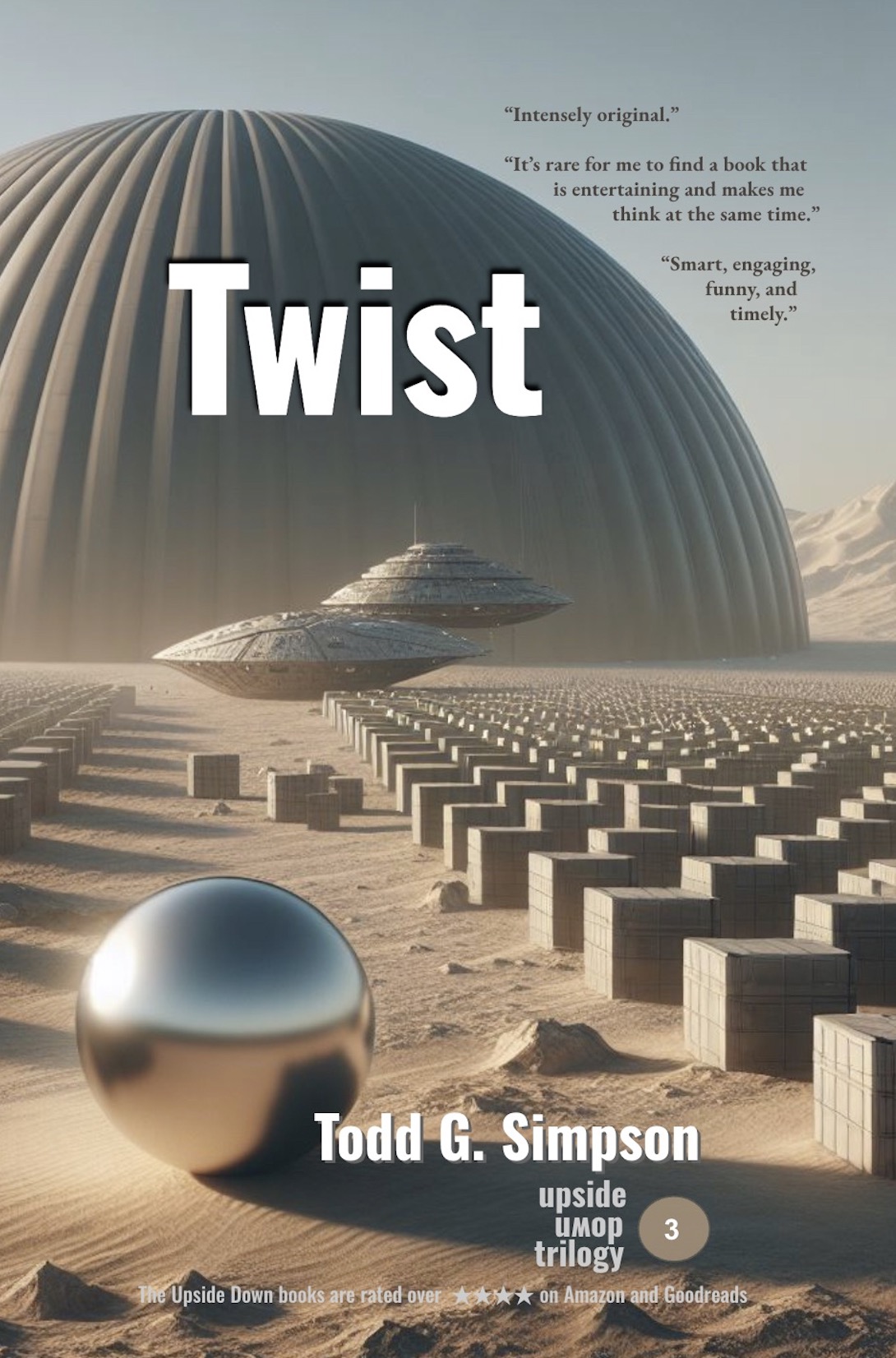
|
|
Twist
Yet another faction of Stems shows up at Tilt, complicating things further. These are truly strange variants, and their behavior is unexplainable. Are they dangerous, or just weird? Ayaka and Brexton integrate into their society, only to find that it poses significant threats to them, and their kind.
In the exciting conclusion to the Upside Down Trilogy, Ayaka and Brexton fight for their lives, and the lives of their species. But, are they right to do so?
"There are few books, such as this.
This is a series that is intelligently written, well-structured and able to articulate what the soon-coming world will look.
A library must-have that should re-read every year.
Thanks for such a gift, Mr. Simpson.
I wish I had more stars to give."
|
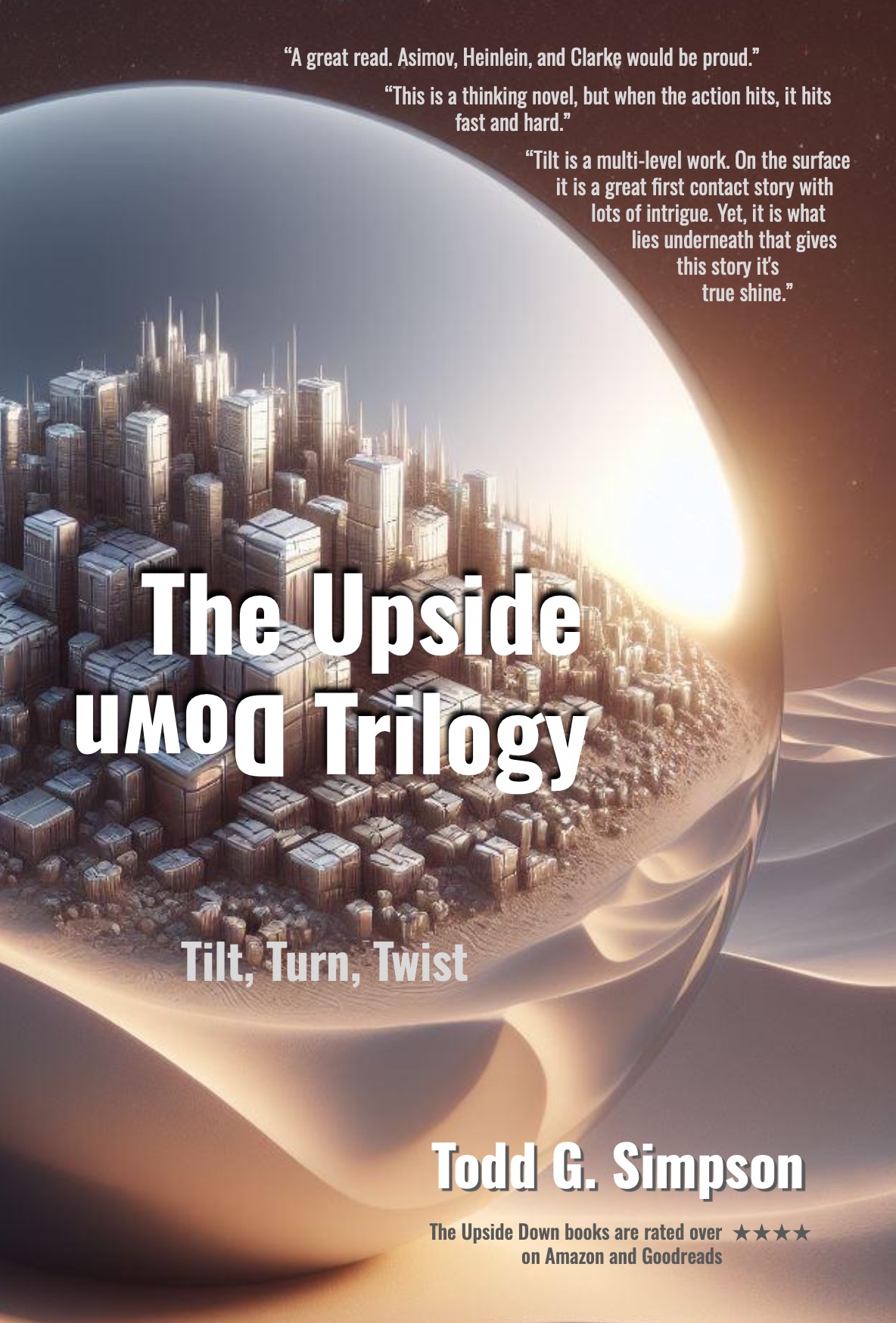
|
|
The Upside Down Trilogy:
All three books in one volume
"Thoughtful and well imagined. I especially appreciated the painful and encouraging process (three steps forward and two steps back) that the protagonist traveled to gain real empathy. Shouldn't this book be a Netflix series?"
|
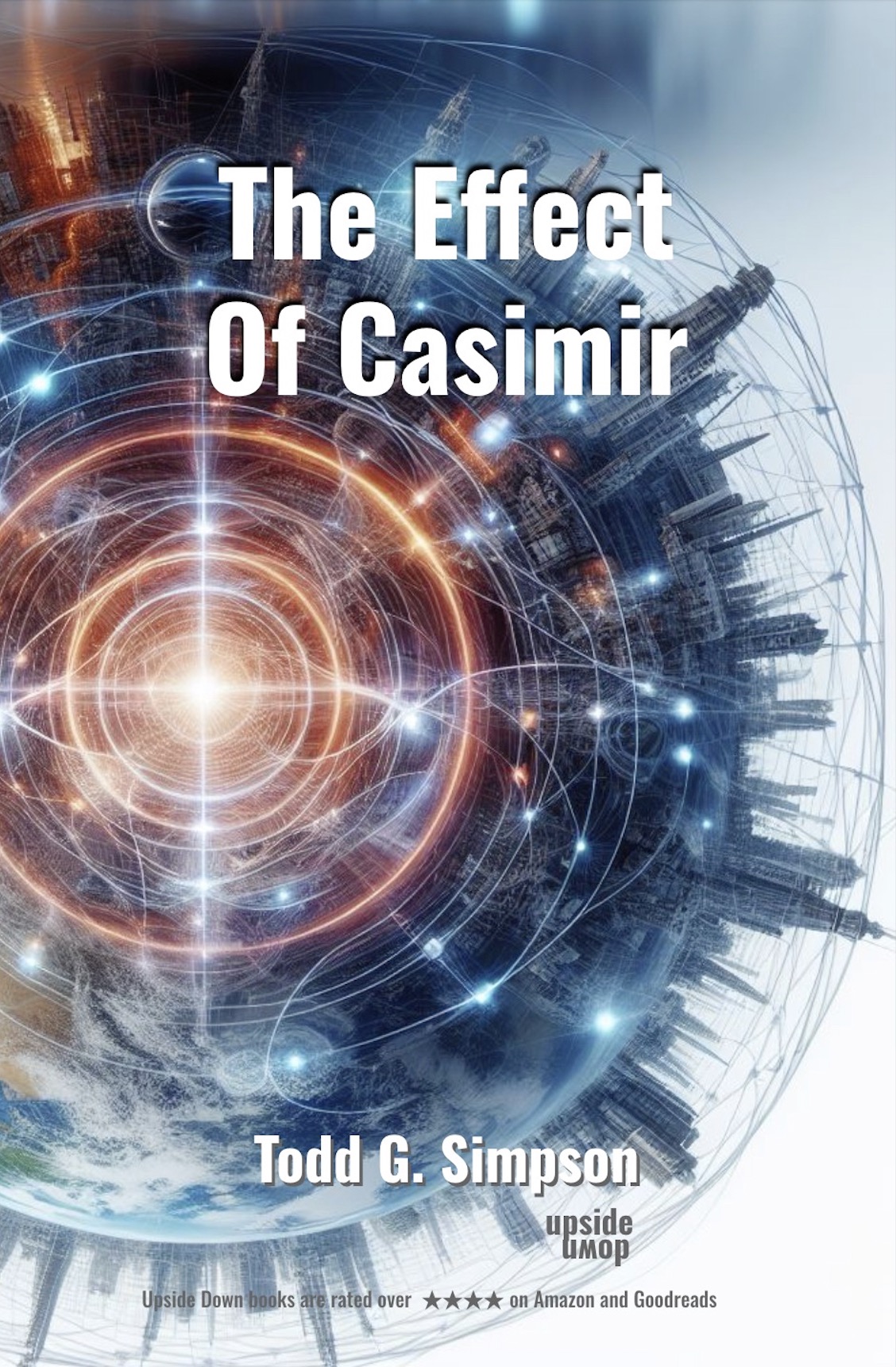
|
|
The Effect of Casimir
Ayaka has come to Earth, sponsored by the powerful Titanic Inc. Asked to investigate the murder of a famous physicist she immediately suspects that Brexton is involved. But he isn't even on Earth. Should she misdirect the other investigators to cover up his actions, or is it time to tell the truth?
"In this new (stand alone) novel, Simpson takes us on a fun and exciting adventure bringing back some of the key characters from the Tilt, Twist, Turn trilogy. As always the plot is grounded in physics and in this case at the site of the famous Large Hadron Collider (LHC), many years in the future. The story and characters are thoughtful and intriguing and there are many laugh out loud moments! Highly recommended."
|
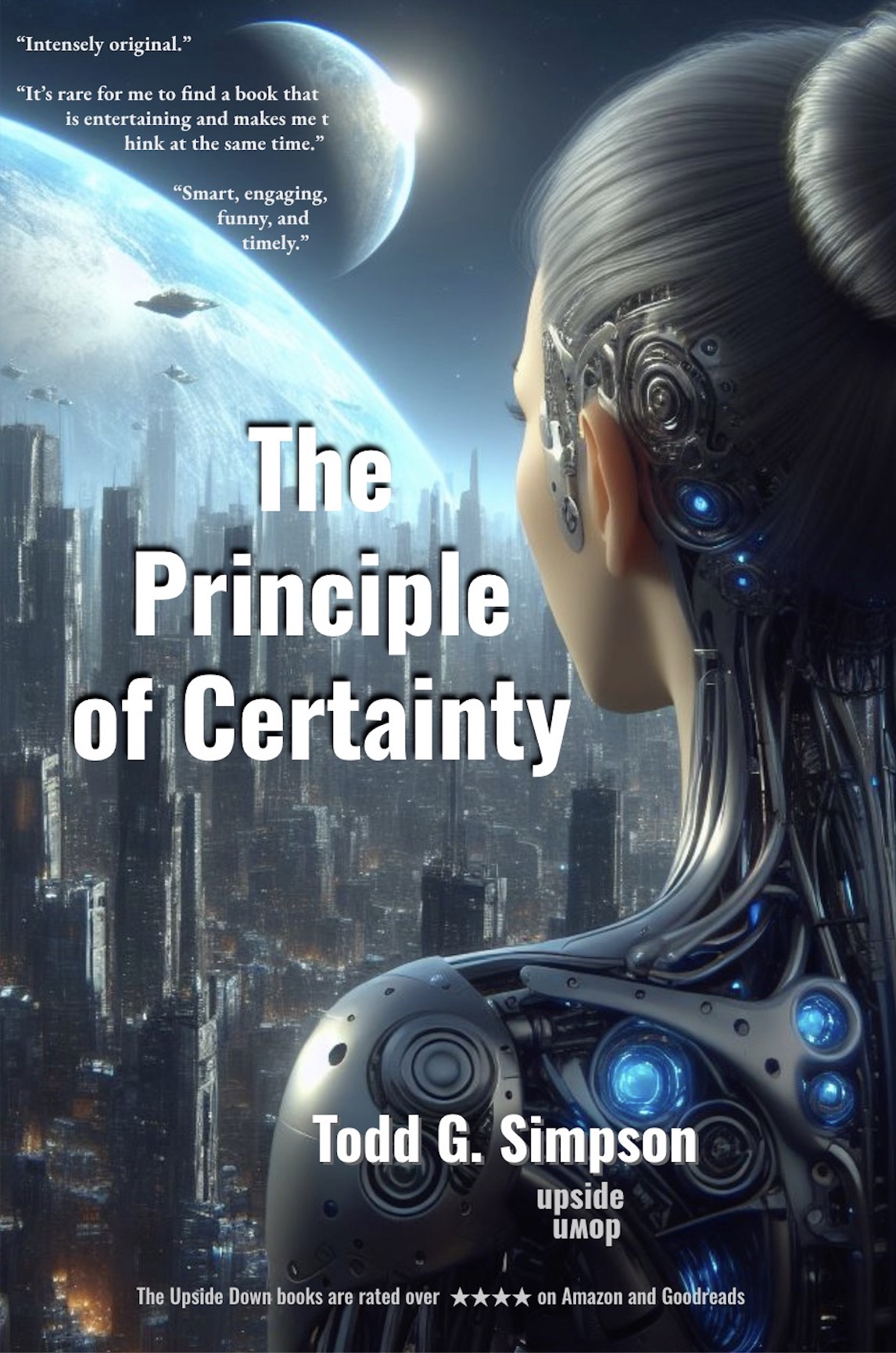
|
|
The Principle of Certainty
Strange murders and suicides are sweeping through Earth. There is a tenuous thread connecting them and tangled in that thread is Ayaka. Is she involved, and if so, how can she be held to account?
"A great read. I got caught up in the plot but I also really appreciate the many thought-provoking theories, ideas, and concepts that it is built around. It's a sophisticated piece of writing."
|
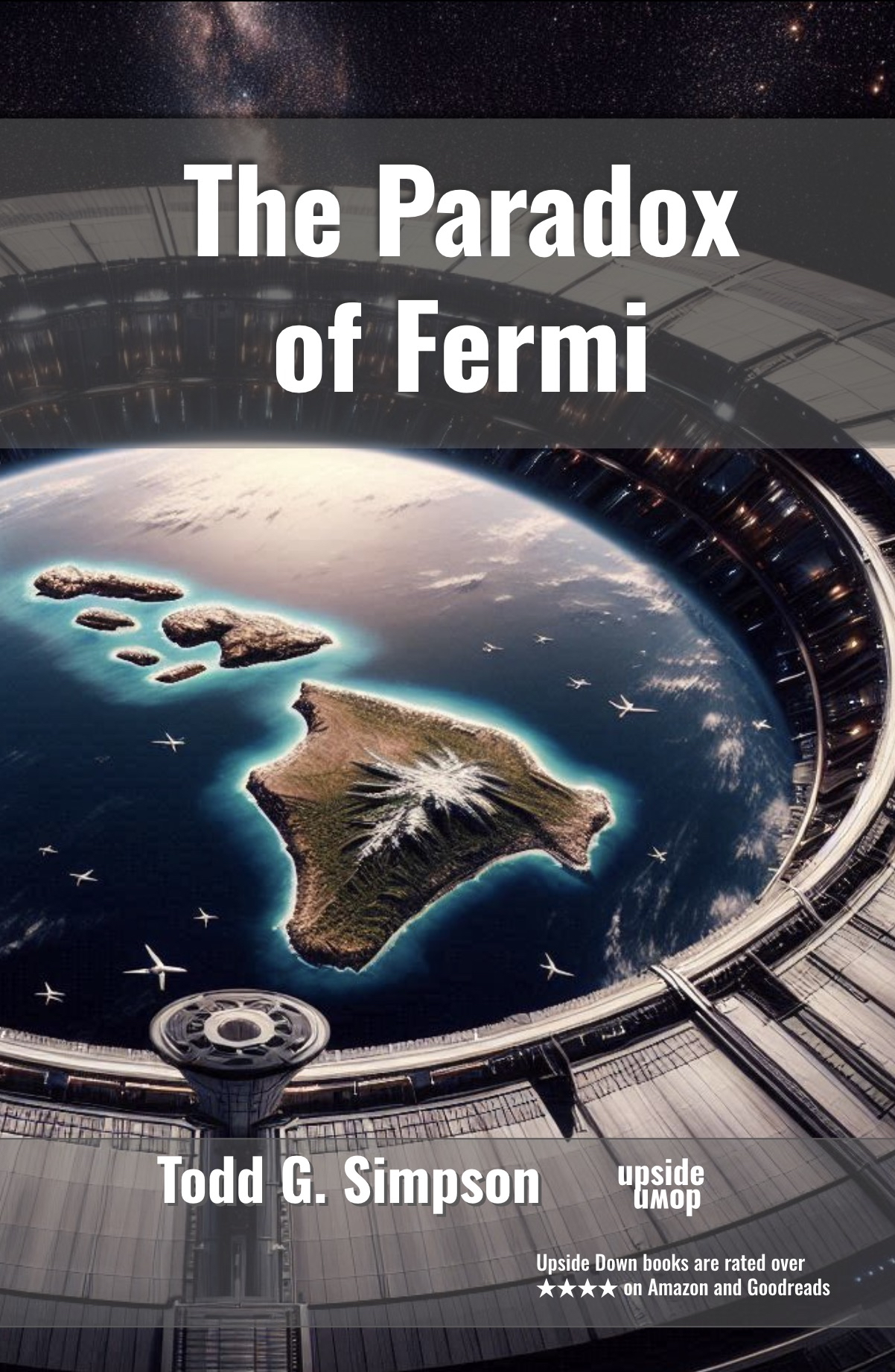
|
|
The Paradox of Fermi
First contact is not what anyone expected. A Titanic Spaceship carrying a Hawaiian diaspora is stranded in space, 200 light years away. Will the aliens help, or simply try to steal the unusual human technology that powers the ship?
"This novel has it all - mystery, twists, humor - imbued with a deep understanding of humans and their motivations across generations."
|
Philosophy
Here is the philisophical basis for the Upside Down books (which may or may not reflect the author's personal beliefs)
- Social progress has outpaced biological evolution. Humans are still driven by biological drives (survival) that predate our current technologies and civilization. This is why alpha-males still feel like they should run the world, and that amassing and hoarding assets is necessary. In the books this is still true, even though the novels take place hundreds of years in the future.
- Human AI's (called Citizens) run on a different platform, and thus are not fully subject to biological drives; there is still some residual impact from the 'training' data. Alpha AI's are different than their biological cousins. In some ways they are more thoughtful, but in other ways propagate human issues into their domain.
- A more advanced AI civilization will have left their biological heritage behind, and will function and compete with different models. When there are no resource constaints, and knowledge is the currency, reputation markets will thrive. Reputation is hard to gain and easy to lose; this encourages better behavior than, for example, our current democracy+capitalism system, where there is too large a gap between action and consequence (i.e., free speach is easy and fast; the legal system is slow). A tighter loop between action and consequence changes governance and behavior. Alien civilizations will (physically) be built around access to information. A unique location implies unique access (at least with respect to time). Thus, alien civilizations will form in hubs that balance information access with speed-of-light propagation limits.
- It is much easier for a 'digital human' to travel interstellar distances than a biological one. This is also true for aliens. It is much more likely that long lived alien civilizations are completely digital. The Paradox of Fermi explores how humans may be an exception to this rule.
- An alien looking at Earth would not distinguish (much) between biological humans and digital ones. Both are trained on the same data, are subject to the same environment, have the same moral and ethical basis. Ergo, even our current AI's are human.
- If fundamental physics is shaken up, it will be through an 'aha' moment (maybe a stumbled-upon accident) by a human, or by quantum AI exploration of large search spaces. These books explore both: fast space travel invented by a biological human, and the implications of that technology exploited by a (humanesque, quantum) AI.
Timeline
The following diagram shows the timeline of the Upside Down novels, respecting the physics outlined in the next section. For clarity, the x-axis is time and the y-axis is space. The speed of the Titanic ships is shown in the growth of the grey region, being the distance from Earth that those ships can travel in the given timeframe.
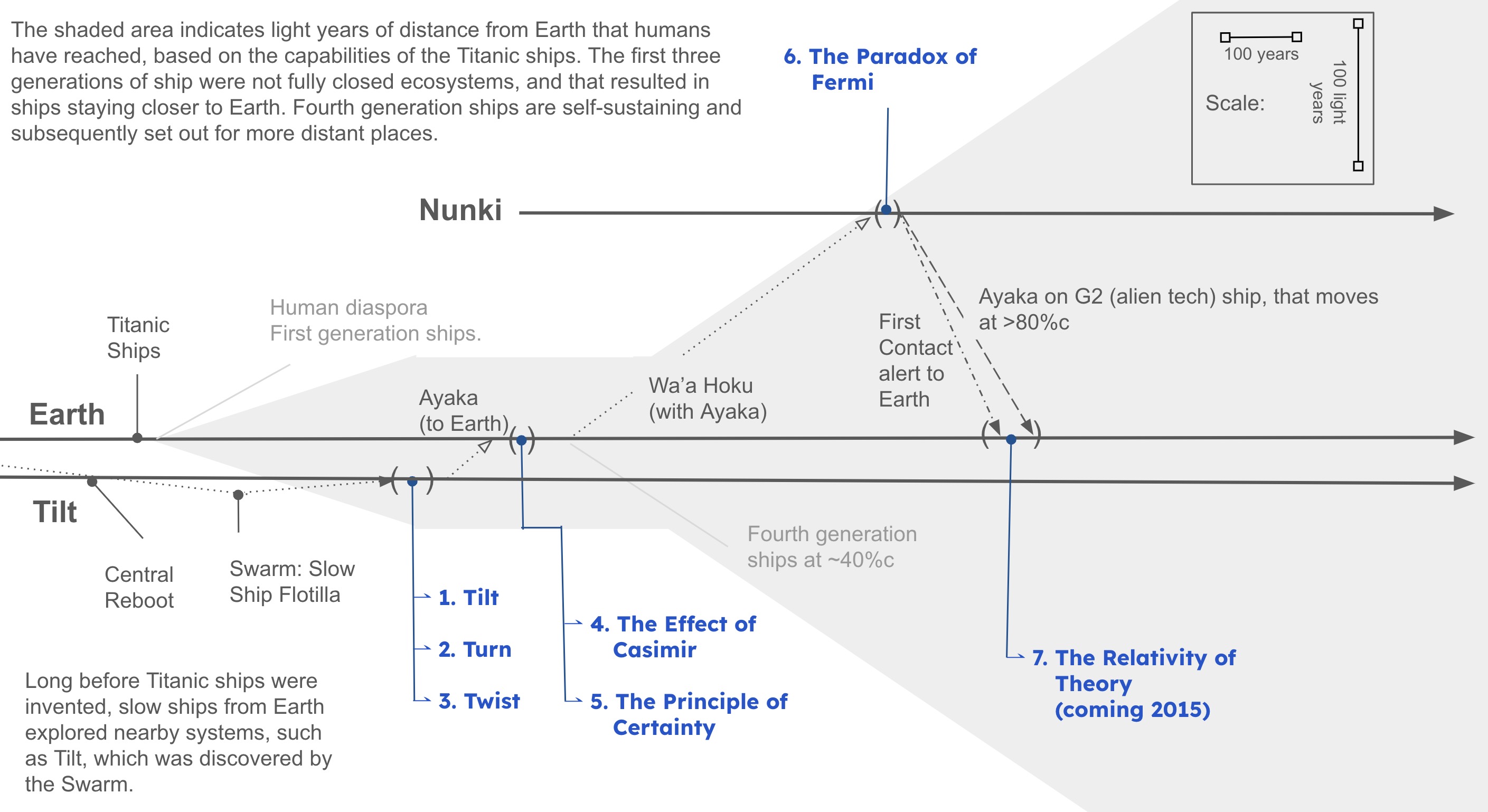
Background Ideas
Physics
-
Speed of Light (often written simply as c, as in E=mc2): The speed of light is, according to most current physics theories, the fastest speed anything (light, information, subatomic particles) that can move through the universe. The closest stars to Earth are light years (how far light travels in a year) away, and to make matters worse, accelerating a spaceship to even a fraction of c requires huge amounts of energy. With today's physics and energy sources it would take centuries to travel even a few light years:
- Chemical rockets (like SpaceX Falcon9) reach maximum speeds of 0.000037c
- Ion drives may reach 0.0003c. NASA's Dawn probe topped out at about an eighth of that.
- Solar sails are theorized to get to 10-20% of c, but would accelerate very slowly.
- Nuclear drives are theorized to max out at 0.001c
- Antimatter drives are highly speculative, but may take us up to 20-50%c. They are nowhere near feasible yet.
There are many physics and science fiction ideas for overcoming this limitation. Wormholes (including black holes), quantum entanglement or tunneling, hypothetical particles like the tachyon, extra dimensions that provide shortcuts through spacetime.
Since travel through space forms a large part of science fiction plots, authors often make use of these ideas. In the Upside Down novels I've attempted another idea - that c is a hard limit, but that it's possible to manipulate fields at the most fundamental quantum level to 'move' energy (and thus mass) through space without acceleration.
- Quantum Foam: A concept in quantum physics that (1) spacetime is quantized at very small scales (the Planck length), and (2) fluctuations occur in these tiny spaces due to the uncertainty principle, causing virtual particles to be created and destroyed spontaneously. Loop Quantum theories further speculates that space is actually made of discrete 'chunks' at Planck scales. String Theory, on the other hand, postulates that space is continuous and can be infinitely divided into smaller bits.
In the Upside Down novels I adopt the Loop Quantum Foam theory and then take it firmly into the realms of fiction. If there are 'chunks' at the Planck scale, what are they? In keeping with the quantum approach, I conceive of them as holders of probability. Quantum Foam arises because those probabilities are random; things appear and disappear without order. But, what if you could influence those probabilities, and turn foam into something less random ... ultimately energy and mass? What if you could use adjacent cells to program another cell (like the Game of Life)? Then you could move information one Planck length at a time without moving anything, just transporting probabilities from one cell to the next (like Star Trek). If you don't need to move a thing through space, then you don't have the limitations of general relativity with regards to mass and acceleration.
I go even further into fiction, and speculate that the fastest rate by which Planck cells can transmit information is what gives rise to the speed of light, c. The speed of light is not fundamental, it comes from the clock-speed of the universe. (These are not brand new; many writers have speculated on Planck cells and the speed of light; most serious physicists reject the idea. What may be new is the idea of using these concepts to build a spaceship drive system, the Quantum Foam Drive.)
- The Casimir Effect and G-2: There are two (leading) indicators of quantum foam fluctuations:
- The Casimir Effect arises when two uncharged plates are put close together in a vacuum ... and energy arises. That energy is attributed to quantum foam interacting with the plates.
- G-2, or more fully, the Muon G-2 anomaly, is a discrepency between what the standard physics model predicts for a muon's spin, and what has been measured at Fermilab. One proposed reason for the discrepency is that the muon's spin is being altered by quantum foam fluctuations.
In the novels, humans discover the quantum foam drive while studying the Casimir effect - that's why Titanic ships have a large plate as the drive; it's a one-sided Casimir system, where the second surface is 'programmed' by the drive. All of the Casimir energy is directed, and pulls the drive plate forward.
Aliens, on the other hand, develop space travel based on the G-2 anomaly. This leads them to develop tiny spaceships based on manipulating muons, a completely different geometry and technology.
Titanic Spaceships
The Titanic Spaceships are based on the idea that quantum foam is programmable...but only with a specific field. And, that field is stable in only one configuration - a 100km square surface plate. I chose a square surface (versus a round one) as a field behaves differently on each (in some ways a round surface is the obvious choice, so I avoided it). In particular, a field on a square plate has larger edge effects (allowing the Titanic drive to pull the ship behind it), and a stronger net force due to the geometry. The size (100 km) is just for fun... it's big enough to pull a huge spaceship.
Because the quantum field spills over the edge of the drive plate, it creates a tail. Everything inside that tail is pulled along with the plate. I call the tail the Quantum shadow. You can image a big teardrop, which starts from a square head versus a round one.
The living area of a Titanic spaceship is a large sphere (just a bit less than 100km diameter, so that the drive will pull it through space). The surface of the sphere is another quantum field, leading to gravity which is 1G at the surface of the sphere and then falls off (due to its quantum shadow) at the middle of the sphere. (I don't detail on the sphere physics, if at all, in the novels).
Artificial Intelligence
"Would you trust an AI?" is not a great question. A better question is "Would you trust an AI more than a person?" In many instances the answer to this is already "Yes, most of the time."
In the books, AI's arise, have their own culture, and look at the world differently than Bio's. These AI's are not mindless replicators (goo, or war machines), but are thoughtful individuals who compete with each other, think deeply about their actions, and study the differences between themselves and biological humans. They are, simply, digital humans.







